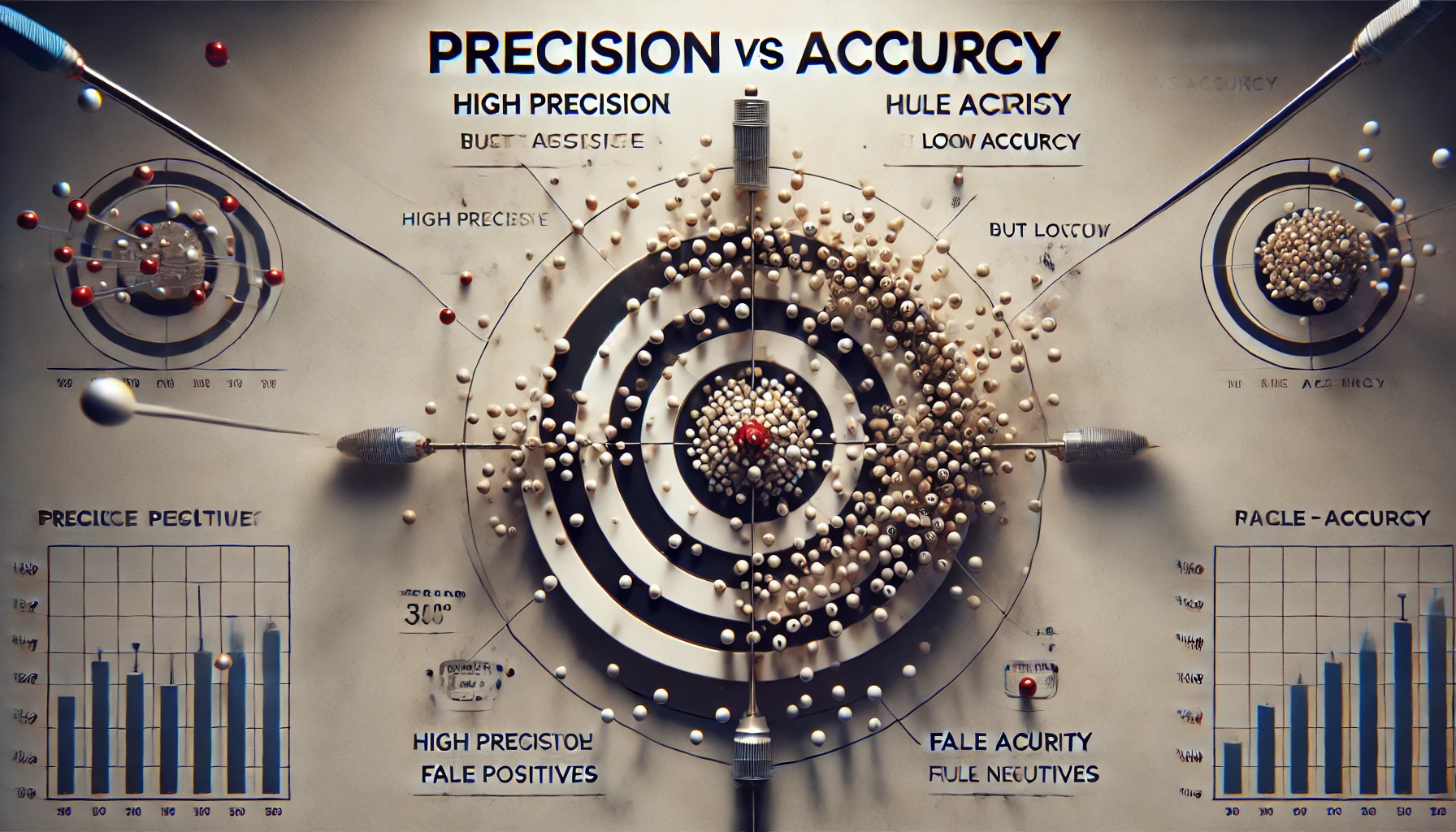When you’re working with machine learning models, two terms that often pop up are precision and accuracy. These metrics, while closely related, serve different purposes and can significantly impact how you interpret your model’s performance. Understanding the distinction between these two can be a game-changer in optimizing your models.
What is Accuracy?
Accuracy is about hitting the bullseye—or getting close enough to call it a win. In machine learning, accuracy refers to the ratio of correctly predicted observations to the total observations. For instance, if your model classifies 90 out of 100 data points correctly, you’ve got 90% accuracy. It gives you a general idea of how well your model is doing across all classes. But beware—accuracy can be misleading, especially in cases where your data is imbalanced. Imagine you’re working with a dataset where 95% of the instances belong to one class. Even if your model naively predicts the majority class every time, you’ll still get high accuracy, but that doesn’t mean the model is any good.
What is Precision?
Precision, on the other hand, tells you how often your model’s positive predictions are correct. It’s the ratio of true positives to the sum of true and false positives. Imagine you’re building a spam filter. Precision would be the proportion of actual spam emails out of all the emails your model flagged as spam. A high precision means your model is good at not raising false alarms, but it doesn’t necessarily mean it’s catching all the spam (that’s where recall comes in). Precision is particularly important in scenarios where the cost of a false positive is high. For example, in medical diagnoses, a high precision ensures that those who are told they have a disease actually do.
Precision vs. Accuracy: Key Differences
While accuracy gives you a broad view of your model’s performance, precision zooms in on the positives. Accuracy is useful for getting a general sense of your model’s effectiveness, but it can mask issues in datasets with imbalanced classes. Precision is more granular, helping you understand how well your model is performing in specific scenarios, especially when making positive predictions.
To illustrate the difference, imagine you’re throwing darts at a board. If your darts are all over the board but average close to the bullseye, you’re accurate. If all your darts hit the same spot but miss the bullseye, you’re precise. The ideal situation is to be both accurate and precise—hitting the bullseye consistently every time.
In summary, knowing when to focus on precision versus accuracy depends on your specific goals and the nature of your data. Understanding this distinction can guide you in selecting the right metrics and ultimately in building better-performing models.

